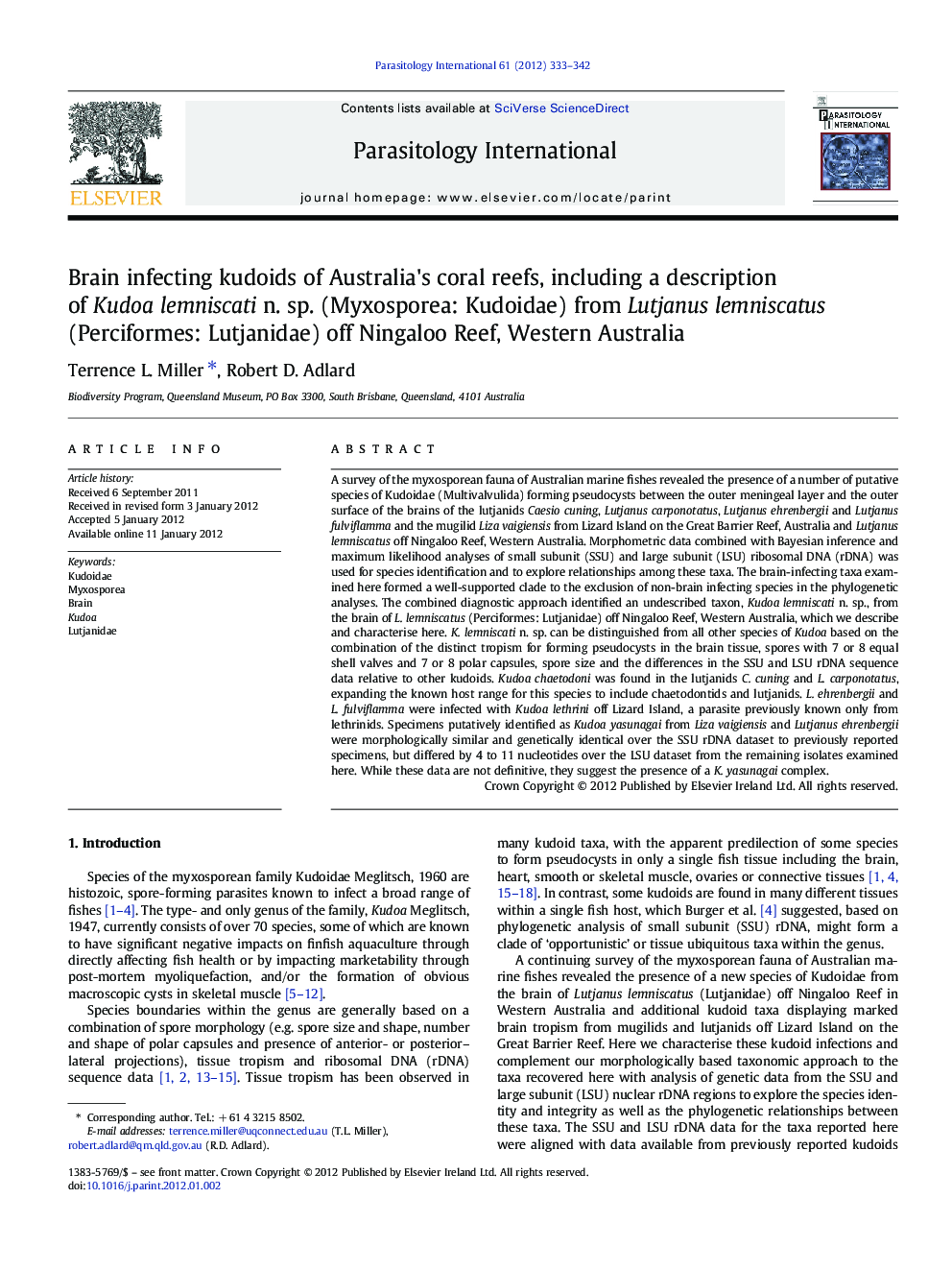| Article ID | Journal | Published Year | Pages | File Type |
|---|---|---|---|---|
| 6136885 | Parasitology International | 2012 | 10 Pages |
A survey of the myxosporean fauna of Australian marine fishes revealed the presence of a number of putative species of Kudoidae (Multivalvulida) forming pseudocysts between the outer meningeal layer and the outer surface of the brains of the lutjanids Caesio cuning, Lutjanus carponotatus, Lutjanus ehrenbergii and Lutjanus fulviflamma and the mugilid Liza vaigiensis from Lizard Island on the Great Barrier Reef, Australia and Lutjanus lemniscatus off Ningaloo Reef, Western Australia. Morphometric data combined with Bayesian inference and maximum likelihood analyses of small subunit (SSU) and large subunit (LSU) ribosomal DNA (rDNA) was used for species identification and to explore relationships among these taxa. The brain-infecting taxa examined here formed a well-supported clade to the exclusion of non-brain infecting species in the phylogenetic analyses. The combined diagnostic approach identified an undescribed taxon, Kudoa lemniscati n. sp., from the brain of L. lemniscatus (Perciformes: Lutjanidae) off Ningaloo Reef, Western Australia, which we describe and characterise here. K. lemniscati n. sp. can be distinguished from all other species of Kudoa based on the combination of the distinct tropism for forming pseudocysts in the brain tissue, spores with 7 or 8 equal shell valves and 7 or 8 polar capsules, spore size and the differences in the SSU and LSU rDNA sequence data relative to other kudoids. Kudoa chaetodoni was found in the lutjanids C. cuning and L. carponotatus, expanding the known host range for this species to include chaetodontids and lutjanids. L. ehrenbergii and L. fulviflamma were infected with Kudoa lethrini off Lizard Island, a parasite previously known only from lethrinids. Specimens putatively identified as Kudoa yasunagai from Liza vaigiensis and Lutjanus ehrenbergii were morphologically similar and genetically identical over the SSU rDNA dataset to previously reported specimens, but differed by 4 to 11 nucleotides over the LSU dataset from the remaining isolates examined here. While these data are not definitive, they suggest the presence of a K. yasunagai complex.
Graphical abstractDownload full-size imageHighlights⺠Kudoa lemniscati n. sp. (Myxosporea) is described from Lutjanus lemniscatus (Perciformes). ⺠This new taxon formed a well-supported clade with other brain tissue infecting kudoids. ⺠Known host ranges of Kudoa chaetodoni, K. lethrini and K. yasunagai are extended to new fish families.
